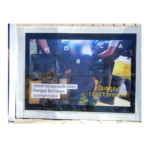Cameras Replacing Sketch Artists Inside the Courtroom

Courtroom sketch artists were once revered as the eyes of the public, capturing the visual drama of a trial and allowing the public to put a picture to the story. But as technology encroaches on all aspects of modern life, cameras have become increasingly powerful – and welcome – inside the courtroom.
There is a common misconception that courtroom sketch artists are part of the court staff. Rather, in their heyday, these talented people were in high demand by media outlets who required pictures to illustrate their reports.
Now, many legal systems around the world permit the use of camera equipment inside the courtroom in an effort to promote open and transparent justice. Cuts to newsroom budgets and shifts toward digital news content have dramatically thinned out the numbers of courtroom artists worldwide.
Despite their fragile existence, sketches from inside the courtroom continue to grip the public as effectively as the most compelling photographs. In America, where some states continue to prohibit cameras in court, sketches often surface on the internet to become viral sensations.
Tom Brady sketch a hit on the web
In August last year, Patriots quarterback Tom Brady (above right) appeared in a United States District Court to give evidence relating to the NFL football tampering scandal commonly known as ‘Deflategate’.
Artist Jane Rosenberg’s courtroom sketch of Brady was particularly unflattering, spawning hilarious memes and prompting comparison to Lurch from the Addams Family. Although Rosenberg has over 35 years of experience as an artist, she found Brady a difficult subject. There’s “something subtle goes on with his eyes,” she told the New York Daily News. “He has a big chin with a cleft in it.”
Illustrations created in the heat of criminal trials hark back to the days when broadsheet papers, text books, and travel journals contained drawings that offered people a view of the wider world. The very best courtroom drawings are sold to museums or collectors for thousands of dollars.
Sketches of Chamberlain case a national treasure
Baby Azaria Chamberlain’s disappearance from Uluru on 17 August 1980 is one of the most infamous events in Australia’s history.
Artist Veronica O’Leary produced 182 courtroom sketches of the high profile criminal trial of Azaria’s parents, Lindy and Michael Chamberlain, for the Australian Broadcasting Corporation. The National Museum of Australia acquired the drawings in 2011.
The Chamberlain collection details what legal counsel Chester Porter QC called an “extraordinary list of forensic blunders” that sent a grieving mother to prison on woefully inadequate evidence, but it does more than that. The drawings captured the attention of the public, ensuring a keen interest in the case and helping to trigger procedural reforms intended to prevent any future miscarriage of justice in Australia.
Dr Anthea Gunn, who was curator at the National Museum, said O’Leary’s collection of drawings was important to preserving the art of courtroom drawing.
“As media becomes increasingly immediate, cameras ever less obvious and individuals ever more used to being filmed, courtroom drawings seem increasingly archaic,” Dr Gunn said.
“The collection also presents technology on the cusp of digital transformations. The drawings were filmed at 3.30pm and broadcast to the southern states and with one drawing is an overlay of an acetate sheet with Letraset text to append quotes over the top of the image; techniques now achievable in minutes with the most basic computers.”
Although these images remain relevant and interests, the seemingly inevitable demise of the courtroom sketch artist appears to be just another consequence of technological advancement.






